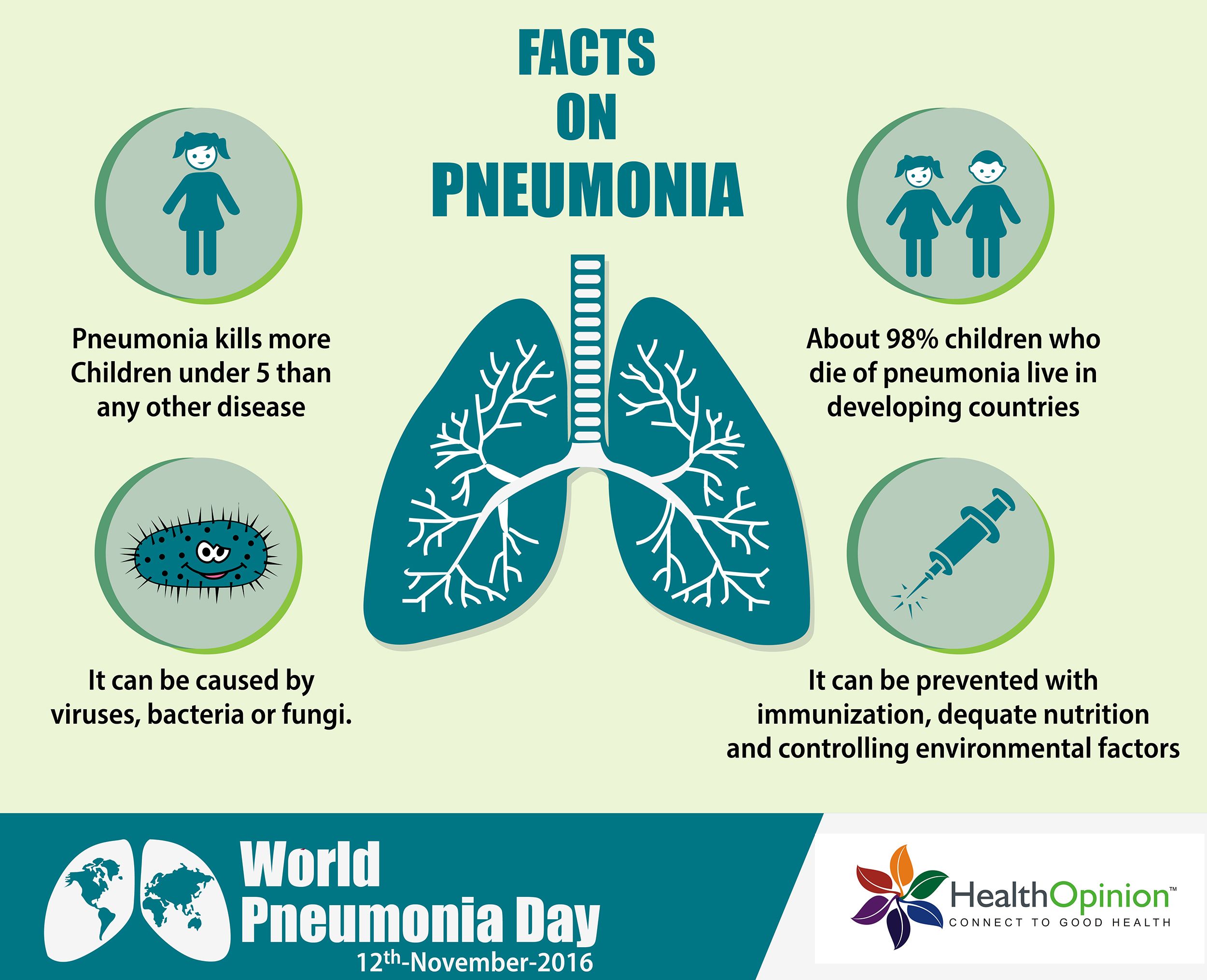Bronchitis and pneumonia at the same time. Bronchitis vs. Pneumonia: Understanding Key Differences and Similarities
How do bronchitis and pneumonia differ in symptoms and severity. What are the common signs of each respiratory condition. Can bronchitis develop into pneumonia. Who is at higher risk for complications from these lung infections.
The Basics: Defining Bronchitis and Pneumonia
Respiratory infections can often leave us wondering about the exact nature of our condition. Two common culprits that share several symptoms are bronchitis and pneumonia. While they may seem similar at first glance, these conditions affect different parts of the respiratory system and can vary significantly in severity and treatment approaches.
Bronchitis is an inflammation of the bronchial tubes, the passages that carry air to and from the lungs. Acute bronchitis typically develops from a viral infection and usually resolves within one to two weeks. Chronic bronchitis, on the other hand, is a long-term condition characterized by recurring cough and other persistent symptoms.

Pneumonia is an infection that affects one or both lungs, causing the air sacs (alveoli) to fill with fluid or pus. It can be caused by bacteria, viruses, or fungi. While anyone can develop pneumonia, certain groups such as children, the elderly, and those with chronic diseases are at higher risk.
Symptom Overlap: Identifying Common Signs of Bronchitis and Pneumonia
Both bronchitis and pneumonia share several symptoms, which can make it challenging to differentiate between the two conditions without proper medical evaluation. Some of the common symptoms include:
- Persistent cough, often producing mucus
- Fatigue
- Shortness of breath, especially during physical activity
- Fever and chills
However, there are some distinct symptoms that can help distinguish between the two conditions.
Unique Symptoms of Bronchitis
Bronchitis may also present with:
- Chest discomfort
- Wheezing
Distinct Signs of Pneumonia
Pneumonia can bring on additional symptoms not typically associated with bronchitis:

- Excessive sweating and clammy skin
- Sharp chest pain, especially when breathing deeply or coughing
- Headache
- Loss of appetite
- Confusion
- Nausea, diarrhea, and vomiting
Severity Spectrum: Comparing the Impact of Bronchitis and Pneumonia
While both conditions can range from mild to severe, pneumonia tends to present with more intense symptoms and potentially serious complications. Why is pneumonia often considered more severe than bronchitis?
In pneumonia, the alveoli fill with pus and other fluids, impeding oxygen from reaching the bloodstream. This oxygen deprivation can lead to systemic dysfunction, increasing the risk of severe complications and even death in some cases. Bronchitis, while uncomfortable, generally does not pose the same level of risk to overall health and lung function.
The Bronchitis-Pneumonia Connection: Debunking Common Misconceptions
A prevalent misconception is that bronchitis frequently progresses to pneumonia. However, this is not typically the case for most individuals. Dr. Ralph Gonzales, Associate Dean for Clinical Innovation at the University of San Francisco Health, explains that what is often perceived as bronchitis turning into pneumonia may actually have been pneumonia from the start.

It’s important to note that bronchitis and pneumonia are distinct conditions that can occur independently of each other. In fact, it’s possible to have both bronchitis and pneumonia simultaneously. However, in rare cases, bronchitis can lead to pneumonia when the infection spreads from the bronchial tubes to the lungs or a secondary infection develops.
Risk Factors: Who is More Susceptible to Complications?
While anyone can develop bronchitis or pneumonia, certain groups are at higher risk for complications or for bronchitis potentially progressing to pneumonia. These high-risk individuals include:
- People with weakened immune systems
- Smokers
- Individuals with chronic health conditions (heart, kidney, or liver disease)
- Those with underlying lung diseases
- Older adults
- Young children
- Pregnant women
Understanding these risk factors is crucial for early intervention and appropriate medical care.
Diagnostic Challenges: Distinguishing Between Bronchitis and Pneumonia
Given the overlap in symptoms, how do healthcare providers accurately diagnose bronchitis versus pneumonia? The diagnostic process typically involves a combination of methods:

- Physical examination: Listening to lung sounds and assessing overall health
- Medical history review: Understanding the progression of symptoms and risk factors
- Chest X-ray: Often used to confirm pneumonia and rule out other conditions
- Blood tests: To check for signs of infection and identify the cause (viral or bacterial)
- Sputum culture: Analyzing mucus samples to identify the specific pathogen causing the infection
Accurate diagnosis is crucial for determining the appropriate treatment approach and preventing potential complications.
Treatment Approaches: Managing Bronchitis and Pneumonia
The treatment strategies for bronchitis and pneumonia can differ significantly based on the underlying cause and severity of the condition. How are these respiratory infections typically managed?
Treating Bronchitis
Acute bronchitis, being primarily viral in nature, often resolves on its own with supportive care. Treatment may include:
- Rest and hydration
- Over-the-counter pain relievers and fever reducers
- Humidifiers to ease breathing
- Avoiding irritants like smoke
Antibiotics are generally not recommended for acute bronchitis unless a bacterial infection is suspected.

Managing Pneumonia
Pneumonia treatment depends on the cause (bacterial, viral, or fungal) and severity:
- Antibiotics for bacterial pneumonia
- Antiviral medications for certain types of viral pneumonia
- Antifungal drugs for fungal pneumonia
- Oxygen therapy for severe cases
- Hospitalization may be necessary for severe cases or high-risk individuals
In both conditions, symptom management and supportive care play crucial roles in recovery.
Prevention Strategies: Reducing the Risk of Respiratory Infections
While it’s not always possible to prevent bronchitis or pneumonia, certain measures can significantly reduce the risk of developing these respiratory infections. What steps can individuals take to protect themselves?
- Practice good hygiene: Regular handwashing and avoiding touching the face
- Get vaccinated: Annual flu shots and pneumococcal vaccines for high-risk groups
- Quit smoking and avoid secondhand smoke
- Maintain a healthy lifestyle: Proper nutrition, regular exercise, and adequate sleep
- Manage chronic conditions effectively
- Avoid close contact with sick individuals when possible
By implementing these preventive measures, individuals can significantly reduce their risk of developing bronchitis, pneumonia, and other respiratory infections.

Long-Term Impact: Understanding the Potential Consequences of Respiratory Infections
While most cases of acute bronchitis and pneumonia resolve without long-term effects, some individuals may experience lasting impacts on their respiratory health. What are the potential long-term consequences of these infections?
Possible Long-Term Effects of Bronchitis
- Increased susceptibility to future respiratory infections
- Development of chronic bronchitis in some cases
- Exacerbation of existing respiratory conditions like asthma
Potential Long-Term Impacts of Pneumonia
- Lung scarring, potentially affecting breathing capacity
- Increased risk of future pneumonia episodes
- Possible cardiovascular complications in severe cases
- Cognitive impairment in elderly patients who experience severe pneumonia
Understanding these potential long-term effects underscores the importance of proper treatment and follow-up care for both bronchitis and pneumonia.
When to Seek Medical Attention: Recognizing Red Flags
While many cases of bronchitis and mild pneumonia can be managed at home, certain symptoms warrant immediate medical attention. When should you consult a healthcare provider?

- Persistent high fever (above 101°F or 38.3°C) for more than three days
- Difficulty breathing or shortness of breath at rest
- Chest pain that worsens with breathing or coughing
- Coughing up blood or rust-colored sputum
- Rapid heartbeat or confusion
- Symptoms that worsen instead of improving over time
Prompt medical evaluation in these cases can prevent complications and ensure appropriate treatment.
Emerging Research: New Insights into Respiratory Infections
The field of respiratory medicine is constantly evolving, with new research shedding light on the complexities of conditions like bronchitis and pneumonia. What are some recent developments in our understanding of these infections?
- Role of the microbiome: Emerging studies suggest that the balance of microorganisms in the respiratory tract may influence susceptibility to infections and treatment outcomes.
- Personalized treatment approaches: Advances in genetic testing and biomarker analysis are paving the way for more tailored treatment strategies.
- Impact of air pollution: Growing evidence links air quality to the incidence and severity of respiratory infections, emphasizing the importance of environmental factors in lung health.
- Novel diagnostic tools: Development of rapid, point-of-care tests for distinguishing between viral and bacterial infections could revolutionize treatment decisions.
These ongoing research efforts hold promise for improving the diagnosis, treatment, and prevention of bronchitis, pneumonia, and other respiratory conditions in the future.

Living with Respiratory Vulnerabilities: Strategies for Ongoing Management
For individuals who have experienced bronchitis or pneumonia, or those with chronic respiratory conditions, ongoing management is crucial for maintaining lung health. What strategies can help in the long-term management of respiratory vulnerabilities?
- Regular check-ups with a healthcare provider to monitor lung function
- Adhering to prescribed medication regimens, including inhalers or other respiratory treatments
- Participating in pulmonary rehabilitation programs when recommended
- Practicing breathing exercises to improve lung capacity and function
- Maintaining a clean home environment to reduce exposure to irritants and allergens
- Staying up-to-date with vaccinations, including annual flu shots and pneumococcal vaccines
- Engaging in regular, moderate exercise to improve overall health and lung function
- Managing stress through relaxation techniques, as stress can exacerbate respiratory symptoms
By implementing these strategies, individuals can take an active role in managing their respiratory health and reducing the risk of future infections or complications.
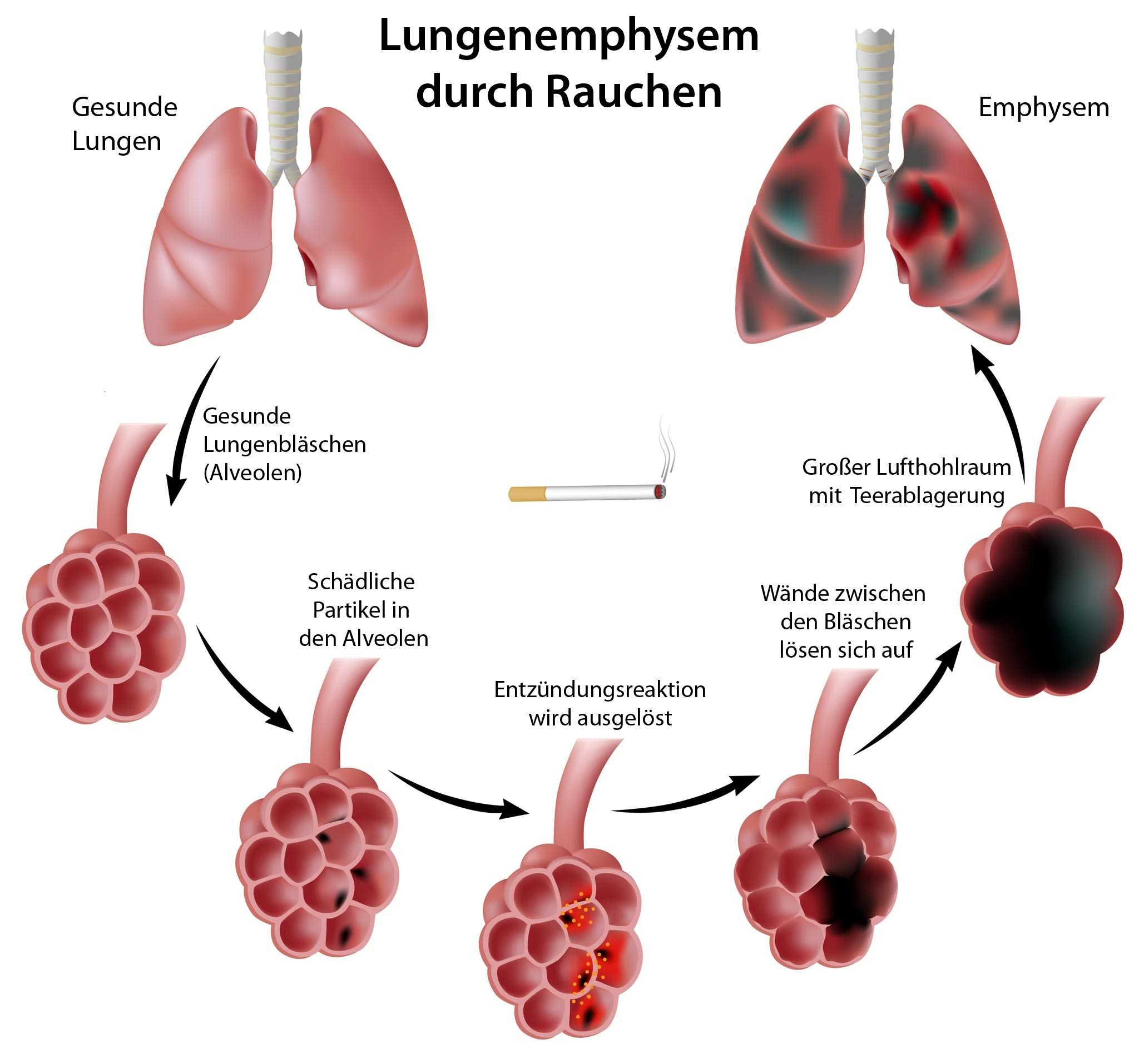
The Role of Nutrition in Respiratory Health
Proper nutrition plays a significant role in maintaining a healthy immune system and supporting overall respiratory function. How can diet contribute to lung health and resilience against infections like bronchitis and pneumonia?
Key Nutrients for Respiratory Health
- Vitamin C: Found in citrus fruits, berries, and leafy greens, it supports immune function and may help reduce the duration of respiratory infections.
- Vitamin D: Important for immune regulation and potentially reducing the risk of respiratory infections. Sources include fatty fish, egg yolks, and fortified foods.
- Omega-3 fatty acids: Found in fish, flaxseeds, and walnuts, these may help reduce inflammation in the airways.
- Zinc: Present in lean meats, seafood, and legumes, zinc supports immune function and may help reduce the severity of respiratory symptoms.
- Antioxidants: Found in colorful fruits and vegetables, these compounds help protect lung tissue from oxidative stress.
Incorporating a balanced diet rich in these nutrients can contribute to overall respiratory health and potentially reduce the risk and severity of infections like bronchitis and pneumonia.
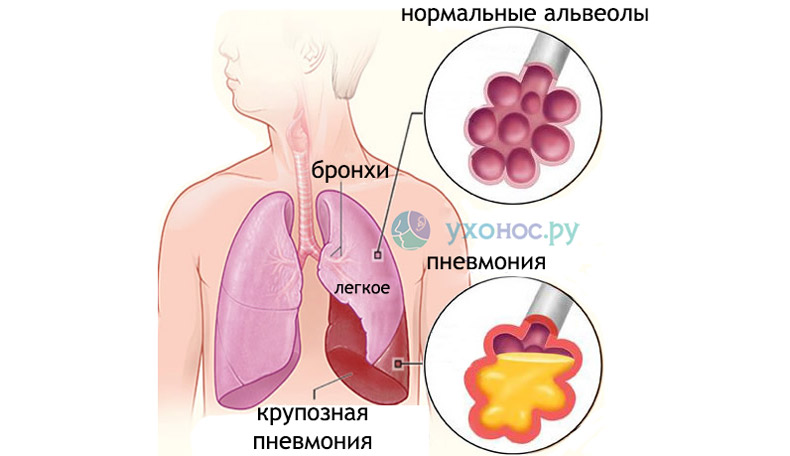
The Impact of Climate Change on Respiratory Health
As global climate patterns continue to shift, the impact on respiratory health is becoming increasingly apparent. How might climate change affect the incidence and severity of conditions like bronchitis and pneumonia?
- Increased air pollution: Rising temperatures can lead to higher levels of ground-level ozone and particulate matter, exacerbating respiratory symptoms and increasing susceptibility to infections.
- Changes in allergen patterns: Shifts in plant blooming cycles and pollen production can affect allergic responses and potentially increase vulnerability to respiratory infections.
- Extreme weather events: More frequent natural disasters can disrupt healthcare access and increase exposure to environmental hazards that affect lung health.
- Spread of infectious diseases: Changing climate patterns may alter the geographical distribution of pathogens responsible for respiratory infections.
Understanding these potential impacts underscores the importance of both individual and collective action in addressing climate change and its effects on respiratory health.

Technological Advancements in Respiratory Care
The field of respiratory medicine is benefiting from rapid technological advancements, offering new tools for diagnosis, treatment, and management of conditions like bronchitis and pneumonia. What are some innovative technologies shaping the future of respiratory care?
- Artificial Intelligence (AI) in diagnosis: Machine learning algorithms are being developed to analyze chest X-rays and CT scans, potentially improving the accuracy and speed of pneumonia diagnosis.
- Telemedicine and remote monitoring: Wearable devices and smartphone apps allow for continuous monitoring of respiratory parameters, enabling early detection of exacerbations and timely interventions.
- 3D-printed medical devices: Customized inhalers and spacers can be created to improve medication delivery and patient compliance.
- Virtual reality (VR) in pulmonary rehabilitation: VR technology is being explored as a tool to enhance engagement and effectiveness in pulmonary rehabilitation programs.
- Nanotechnology in drug delivery: Nanoparticle-based treatments are being researched for more targeted and efficient delivery of medications to the lungs.
These technological advancements hold promise for improving the prevention, diagnosis, and treatment of respiratory infections and chronic lung conditions in the coming years.

Bronchitis vs. Pneumonia: What Are the Differences?
If you’ve experienced a lingering cough that seems to come from deep in your chest, you may have wondered: Could I have bronchitis or pneumonia?
Coughs are a common symptom of respiratory infections like a cold or the flu — your body’s way of naturally clearing irritants out of your air passages to help prevent infection. (1)
More on Symptoms
Signs and Symptoms That Mean You Have Bronchitis
But a cough that won’t go away even after your sore throat, fever, and other symptoms have gotten better, and that’s accompanied by wheezing or shortness of breath, may indicate that you’re dealing with something more serious, like bronchitis or pneumonia. (1,2)
Given how many symptoms the two respiratory conditions share, it’s not surprising that bronchitis is often mistaken for pneumonia and vice versa. Bronchitis that’s thought to have turned into pneumonia may actually have been pneumonia all along. It’s also common for people to think that bronchitis can often turn into pneumonia, but in reality, this is not the case for most people, explains Ralph Gonzales, MD, the associate dean for clinical innovation and chief innovation officer for the University of San Francisco Health and an internal medicine specialist. “What we call bronchitis may sometimes be pneumonia,” he says.
“What we call bronchitis may sometimes be pneumonia,” he says.
Bronchitis vs. Pneumonia: What Are the Differences and Similarities?
Acute bronchitis is a condition in which the lining of your bronchial tubes (the passages that carry air to and from your lungs) becomes inflamed. This condition usually develops as a result of a viral infection like a cold or the flu, and it typically gets better in about one to two weeks. (This is different from chronic bronchitis, which is a condition that does not go away and is marked by a recurring cough and other symptoms that can be managed but not cured.) (3,4)
Pneumonia is an infection in one or both of the lungs that can be caused by bacteria, viruses, or fungi. When you have pneumonia, the air sacs of the lungs (alveoli) fill up with fluid or pus. While anyone can get pneumonia, some people — such as children, the elderly, people with asthma, and individuals with chronic disease — are at an increased risk of developing this lung condition. (1,5,6)
(1,5,6)
RELATED: Everything You Need to Know About Pneumonia in Kids
Both bronchitis and pneumonia involve inflammation in the chest (though that inflammation occurs in different parts of the chest for each one). And both conditions share some common symptoms: (1,2,5,7,8)
- Cough (often accompanied by the production of mucus)
- Fatigue
- Shortness of breath that can get worse when you’re active
- Fever and chills
Bronchitis can also, however, bring on chest discomfort and wheezing.
And pneumonia can bring on these symptoms not usually linked to bronchitis: (7,8,9)
- Excessive sweating and clammy skin
- Suddenly feeling worse after cold or flu symptoms go away
- Sharp pain in the chest, especially when breathing deeply or coughing
- Headache
- Loss of appetite
- Lack of energy
- Confusion
- Nausea, diarrhea, and vomiting
While symptoms for either bronchitis or pneumonia can range from mild to serious enough to require hospitalization, symptoms such as fever, breathing problems, and chest pain tend to be more severe with pneumonia.
In people with pneumonia, the alveoli fill with pus and other fluids and prevent oxygen from reaching the bloodstream; when there’s too little oxygen in the blood, the body cannot function properly, increasing the risk of death. (1,10)
Can Bronchitis Turn Into Pneumonia?
While bronchitis and pneumonia both have to do with chest inflammation, they are separate and different conditions that happen independent of each other — meaning one doesn’t necessarily cause the other, explains Fernando Holguin, MD, a professor of medicine at the University of Colorado School of Medicine and the director of the asthma clinical research program at the Center for Lungs and Breathing at the University of Colorado Hospital, both in Aurora. “And you can have both bronchitis and pneumonia at the same time,” Dr. Holguin says.
That said, in some cases bronchitis does turn into (thereby causing) pneumonia. This occurs when either the infection spreads from the bronchial tubes to the lungs or a secondary infection occurs. While either scenario is rare, it tends to happen more often in people who have a weakened immune system or another condition that makes them more susceptible to infection.
While either scenario is rare, it tends to happen more often in people who have a weakened immune system or another condition that makes them more susceptible to infection.
Some people are at risk of bronchitis turning into pneumonia: (11,12)
- Those with a weakened immune system
- Smokers
- Individuals who have a chronic health condition, such as heart, kidney, or liver disease
- People with an underlying lung disease
- Older adults
- Young children
- Pregnant women
While doctors aren’t sure exactly how having a viral infection may make someone more prone to developing pneumonia or another secondary infection, studies have pointed to some theories.
“Animal models have shown that when you have an infection, it weakens your body’s ability to protect against bacterial infection,” Dr. Gonzales explains. (13) Doctors also think that the epithelial tissue of the airway, which serves as a barrier against viruses and bacteria, can become compromised following a viral infection, making it easier for bacteria to invade, Gonzales adds. (14)
(14)
What Can I Do to Stop Bronchitis From Turning Into Pneumonia?
Most cases of respiratory infections like a cold or the flu, and related bronchitis, do not lead to pneumonia. And in healthy people, pneumonia can usually be treated effectively. But for those who are at an increased risk for developing pneumonia after bronchitis (such as the elderly, people with chronic health conditions, and pregnant women), pneumonia can be very dangerous, even deadly. (10)
The best way to prevent a secondary infection is to reduce your risk of getting a viral or bacterial infection in the first place. Wash your hands regularly, avoid touching your face, and if a family member is sick, don’t share utensils and clean common areas regularly (the flu virus can live on a surface for up to 48 hours, according to the Centers for Disease Control and Prevention). (14,15)
Doctors also stress the importance of getting a flu vaccine and pneumococcal vaccine to prevent a viral infection that can lead to pneumonia. (10)
(10)
You can also try to prevent getting a secondary infection by taking care of yourself and treating your bronchitis symptoms, which includes these actions: (2,16)
- Getting sleep and staying rested
- Not smoking and minimizing your exposure to secondhand smoke
- Avoiding using housecleaning products until you recover
- Avoiding strenuous exercise for a few days
- Avoiding cold air, which, like certain chemicals, can be irritating to your airway passages
- Using a humidifier
How Doctors May Treat Bronchitis That Turns Into Pneumonia
Treatment of pneumonia that has developed after bronchitis can vary depending on factors like age, severity of symptoms, and medical history. “If your symptoms are severe, your doctor may recommend hospitalization,” says Holguin.
If you’re not experiencing breathing difficulties or other serious symptoms and your pneumonia is determined to be bacterial, you may be prescribed an oral antibiotic.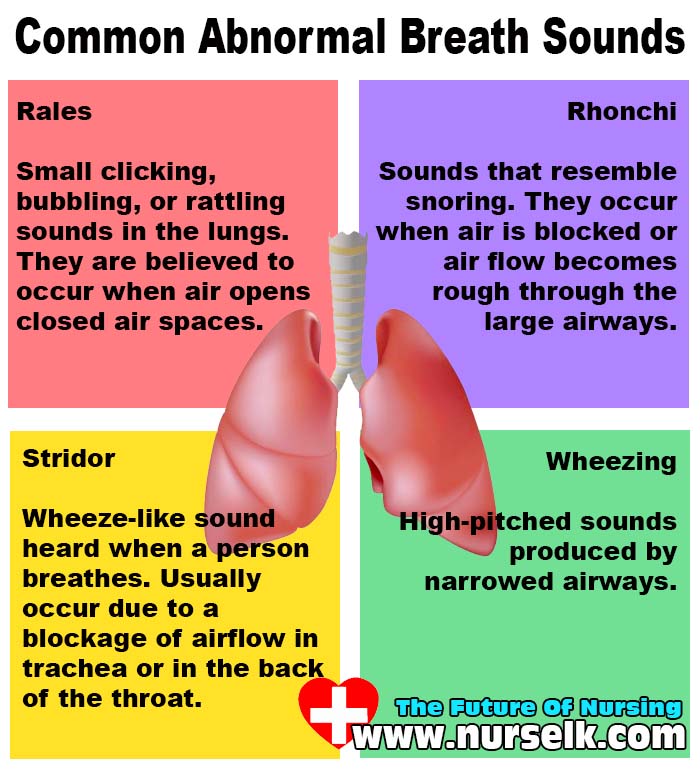 (17)
(17)
Your doctor may also test you for other infections, such as the flu, and depending on your symptoms and test results, recommend an antiviral medication, says Holguin. (17,18,19)
If your doctor determines that your pneumonia can be treated at home, they may suggest the following: (17)
- Drinking plenty of fluids, which can help loosen phlegm and clear it out of your body
- Getting lots of rest (not going to work and enlisting someone to help with household chores)
- Taking ibuprofen (Advil) or acetaminophen (Tylenol) for fever or chest pain
If hospitalized for pneumonia, you may be given these treatments: (17,18,19)
- Oxygen therapy and other breathing treatments
- Fluids (possibly intravenously as well as by mouth)
- Antimicrobial agents (either antibiotics or antiviral medications)
Editorial Sources and Fact-Checking
- Cough Culprits. NIH News in Health. May 2017.
- Acute Bronchitis. MedlinePlus.
 January 17, 2022.
January 17, 2022. - Chronic Bronchitis. American Lung Association.
- Bronchitis. National Heart, Lung, and Blood Institute. March 24, 2022.
- What Is Pneumonia? National Heart, Lung, and Blood Institute. March 24, 2022.
- Pneumonia Symptoms and Diagnosis. American Lung Association. October 5, 2022.
- Bronchitis: Symptoms and Causes. Mayo Clinic. April 11, 2017.
- Bronchitis Symptoms, Diagnosis, and Treatment. American Lung Association. March 12, 2020.
- Pneumonia: Symptoms and Causes. Mayo Clinic. June 13, 2020.
- What Is the Connection Between Influenza and Pneumonia? American Lung Association. October 5, 2022.
- Bronchitis. NHS. August 7, 2019.
- Acute Bronchitis: Overview. InformedHealth.org. December 2, 2020.
- Metzger D, Sun K. Immune Dysfunction and Bacterial Coinfections Following Influenza. The Journal of Immunology. September 1, 2013.
- Hendaus MA, Jomha FA, Alhammadi AH. Virus-Induced Secondary Bacterial Infection: A Concise Review.
 Therapeutics and Clinical Risk Management. August 24, 2015.
Therapeutics and Clinical Risk Management. August 24, 2015. - Nonpharmaceutical Interventions (NPIs). Centers for Disease Control and Prevention. April 27, 2020.
- Bronchitis: Diagnosis and Treatment. Mayo Clinic. April 11, 2017.
- Pneumonia Treatment and Recovery. American Lung Association. October 5, 2022.
- Freeman A, Leigh TR Jr. Viral Pneumonia. StatPearls. July 4, 2022.
- Sattar SBA, Sharma S. Bacterial Pneumonia. StatPearls. December 28, 2021.
Show Less
How to Protect Yourself From Wildfire Smoke
Wildfire smoke from Canada is posing a health threat to millions of North Americans. Learn how it can harm you and how to stay safe.
By Don Rauf
Complications That Can Result From Tonsillitis
Complications from tonsillitis are rare, but there are a few you should be aware of. The most common complication is the infection that causes tonsillitis. ..
..
By Becky Upham
Do I Have Tonsillitis? All About Signs and Symptoms
The most common symptoms of tonsillitis include swollen tonsils, painful swallowing, and sore throat. Here are some other symptoms you might experience…
By Becky Upham
Treating Tonsillitis: What You Need to Know
If tonsillitis is caused by a viral infection, you may be able to manage symptoms at home without medication. But if tonsillitis is caused by strep throat…
By Becky Upham
Air Pollution Linked to Increased Risk of Autoimmune Diseases
Breathing air contaminated by traffic fumes, dust, soot, and smoke may make you more likely to develop rheumatoid arthritis and other autoimmune conditions…
By Lisa Rapaport
What Is a Sore Throat? Symptoms, Causes, Diagnosis, Treatment, and Prevention
A sore throat is a common symptom of several different diseases. It can be related to a cold, the flu, or other illnesses like mononucleosis or strep….
It can be related to a cold, the flu, or other illnesses like mononucleosis or strep….
By Cathy Cassata
Compare causes, symptoms, & treatments
Bronchitis vs. pneumonia causes | Prevalence | Symptoms | Diagnosis | Treatments | Risk factors | Prevention | When to see a doctor | FAQs | Resources
It can be challenging to know the difference between bronchitis and pneumonia because they both cause similar symptoms, but understanding how these respiratory infections are different is key to getting proper treatment. Bronchitis is a condition where the airways in the lungs (bronchial tubes) become inflamed and produce mucus. Pneumonia is an infection of the air sacs in one or both of the lungs. Let’s take a more in-depth look at bronchitis and pneumonia to better understand their differences.
Causes
Bronchitis
Bronchitis has two different forms: acute bronchitis and chronic bronchitis.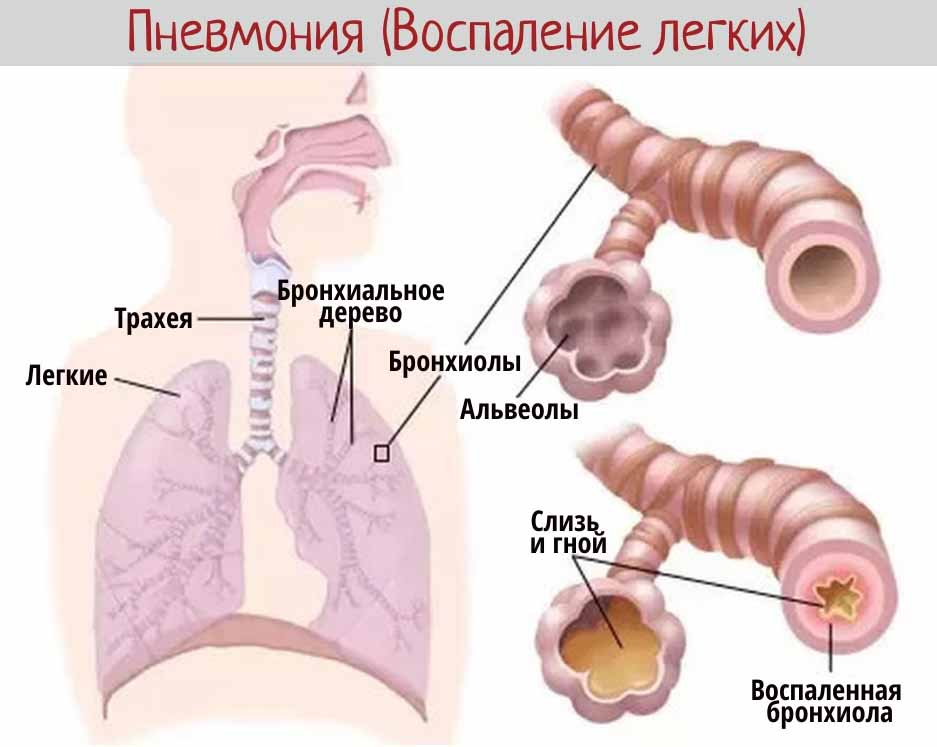 A viral infection like the common cold or flu usually causes acute bronchitis, but bacteria can also be a culprit. Smoking tobacco, exposure to secondhand smoke, air pollution, dust, or toxic gases typically causes chronic bronchitis.
A viral infection like the common cold or flu usually causes acute bronchitis, but bacteria can also be a culprit. Smoking tobacco, exposure to secondhand smoke, air pollution, dust, or toxic gases typically causes chronic bronchitis.
Pneumonia
Bacterial infections most commonly cause pneumonia, but it’s also possible to get pneumonia from a virus or fungus.
Prevalence
Bronchitis
Bronchitis is a fairly common condition. About 5% of adults will self-report an episode of acute bronchitis over the course of a year, and acute bronchitis is the fifth most common reason that adults go to see a primary care physician. Researchers estimate that viruses cause between 85% to 95% of acute bronchitis cases every year. Ninety percent of adults who contract acute bronchitis will seek medical help.
Chronic bronchitis is more serious than acute bronchitis. Chronic bronchitis and emphysema, a condition in which the air sacs become damaged, are together referred to as chronic obstructive pulmonary disease (COPD). More than 16.4 million Americans have been diagnosed with COPD, but there are likely many more people who don’t know they have it, according to the American Lung Association.
More than 16.4 million Americans have been diagnosed with COPD, but there are likely many more people who don’t know they have it, according to the American Lung Association.
Pneumonia
About 1 million adults in the U.S. seek hospital care for pneumonia every year, and pneumonia is the world’s leading cause of death for children younger than 5 years of age. Pneumonia is also the number one reason for children in the U.S. to be hospitalized, and viral pneumonia is the leading cause of infant hospitalizations. The good news is that successful pneumonia treatment often leads to full recovery.
Symptoms
Bronchitis
Bronchitis is mainly characterized by coughing with or without mucus production, wheezing, shortness of breath, low fever, chest tightness, and mild fatigue. The symptoms of acute and chronic bronchitis are essentially the same, but chronic bronchitis lasts much longer than acute bronchitis.
Pneumonia
Symptoms of pneumonia typically include a cough with or without phlegm production, high fevers, chills, severe fatigue, trouble breathing, and overall weakness.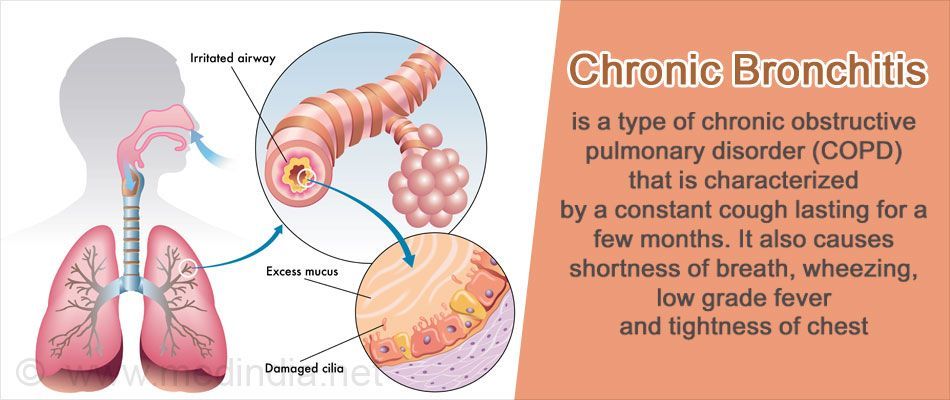 Some people may develop other flu-like symptoms when they have pneumonia, like a runny nose, stuffy nose, or body aches.
Some people may develop other flu-like symptoms when they have pneumonia, like a runny nose, stuffy nose, or body aches.
Diagnosis
Bronchitis
To diagnose bronchitis, a healthcare provider will need to do a physical exam, ask the patient about their medical history, and look for common symptoms of bronchitis. During the physical exam, the provider will listen to the lungs with a stethoscope to check for any abnormal sounds that may indicate clogged airways. Sometimes doctors will order chest X-rays and blood or sputum tests to determine the severity of bronchitis and what’s causing it.
Pneumonia
To diagnose pneumonia, healthcare providers will look for telltale symptoms of pneumonia, ask about the patient’s medical history, and do a physical exam. They’ll listen to the patient’s lungs with a stethoscope to check for abnormal sounds, and they may order a chest X-ray to look for signs of pneumonia. Sometimes physicians will order blood tests to determine if bacteria, a virus, or fungus is the cause of pneumonia. They may also request a sample of the patient’s sputum to be sent for culture if a bacterial cause is thought to be a possible cause.
They may also request a sample of the patient’s sputum to be sent for culture if a bacterial cause is thought to be a possible cause.
Treatments
Bronchitis
There are several treatment options for bronchitis, but it’s important to remember that what works for one person might not work for another. Treatment is also dependent upon a diagnosis of acute versus chronic bronchitis. The best way to make sure you’re getting the right treatment for bronchitis is to talk with your doctor. Here are some of the most common bronchitis treatments:
Medications
- Over-the-counter medications, including cough suppressants, nonsteroidal anti-inflammatory drugs (NSAIDs), and bronchodilators (inhalers)
- Corticosteroids
- Antibiotics
Lifestyle changes
- Staying hydrated
- Quitting smoking
- Avoiding secondhand smoke
Therapies
- Oxygen therapy (chronic bronchitis)
- Pulmonary rehabilitation (chronic bronchitis)
Surgery
- In rare cases, some people with chronic bronchitis may need lung volume reduction surgery to remove damaged lung tissue.

Pneumonia
Pneumonia is most commonly treated with medications, though the type of medication will vary based on the underlying cause. As always, it’s best to talk with your healthcare provider before stopping or starting any new medication. Here are some of the most common pneumonia treatments you could speak with your doctor about:
Medications
- Over-the-counter medications, including fever reducers and pain relievers like ibuprofen and acetaminophen as well as cough suppressants
- Antibiotics
- Antivirals
- Antifungals
Lifestyle changes
- Getting adequate rest
- Drinking plenty of fluids
Therapies
- Supplemental oxygen
Hospitalization
- People with more severe cases of pneumonia may require hospitalized care where they can receive intravenous fluids and antibiotics.
Surgery
- In rare cases, surgery may be necessary to remove infected or damaged parts of the lungs.

RELATED: The best cough medicine
Risk factors
Bronchitis
Some people have a higher risk of getting bronchitis than others. Risk factors for bronchitis include:
- Smoking
- Long-term exposure to secondhand smoke
- Exposure to lung irritants like gases or chemicals
- People older than 65 years of age
- Asthma
- Allergies
- Family history of lung disease or respiratory disease
- Having gastroesophageal reflux disease (GERD)
- Having an alpha-1 antitrypsin deficiency
Pneumonia
Here are the top risk factors for pneumonia:
- Having a health condition that affects the lungs or heart
- Smoking
- Long-term exposure to secondhand smoke, toxic gases, or chemicals
- Being pregnant
- People with compromised immune systems
- People older than 65 years of age
- Infants younger than 2 years old
- Premature babies
Prevention
Bronchitis
Doctors and researchers have come up with proven ways to prevent and lessen the spread of bronchitis. These include washing hands frequently with soap and water, not smoking, avoiding irritants like secondhand smoke whenever possible, and staying up to date with vaccinations.
These include washing hands frequently with soap and water, not smoking, avoiding irritants like secondhand smoke whenever possible, and staying up to date with vaccinations.
Pneumonia
The same precautions that prevent bronchitis can help prevent pneumonia too. Washing your hands frequently with soap and water, not smoking, avoiding secondhand smoke and other irritants, and staying up to date on vaccinations are all very important. There are two types of pneumococcal vaccines and several other vaccines that can prevent bacterial and viral infections that might lead to pneumonia.
When to see a doctor
The Centers for Disease Control and Prevention (CDC) recommends seeing a doctor for bronchitis if:
- You have a fever that’s higher than 100.4 F
- You’re coughing up bloody mucus
- Breathing becomes difficult or painful
- You have sharp chest pain
- Your symptoms last longer than three weeks
If you have pneumonia and start to have trouble breathing, chest pain, bluish fingers or lips, or a high fever that won’t go away, it’s best to see a doctor or visit an urgent care center as soon as possible. People with weakened immune systems, underlying health conditions, older adults, and young children should see a doctor if they have pneumonia because pneumonia can quickly become a life-threatening condition.
People with weakened immune systems, underlying health conditions, older adults, and young children should see a doctor if they have pneumonia because pneumonia can quickly become a life-threatening condition.
Frequently asked questions about bronchitis and pneumonia
Is bronchitis contagious?
Bronchitis itself isn’t contagious, but if it’s caused by a cold or flu virus, then it’s possible to catch the virus and come down with bronchitis because of the virus.
Is pneumonia contagious?
Some bacteria and viruses that cause pneumonia, like the cold and flu viruses, can be contagious. If caught, they could potentially lead to pneumonia.
RELATED: Is pneumonia contagious?
How long does bronchitis last?
Symptoms of acute bronchitis can last anywhere from one to two weeks, though some people may still have symptoms for up to three weeks. Chronic bronchitis lasts for at least three months and can persist for several years on and off. For some people, chronic bronchitis will never completely go away.
For some people, chronic bronchitis will never completely go away.
How long does pneumonia last?
Mild cases of pneumonia typically last a week or two, but more severe cases can result in symptoms that last six weeks or more.
How do you know if you have bronchitis or pneumonia?
Pneumonia symptoms are usually more severe than bronchitis symptoms. If you have a cough that’s accompanied by a high fever, sharp chest pain, and chills, it’s more likely that you have pneumonia vs. bronchitis.
How does bronchitis turn into pneumonia?
Bronchitis can turn into pneumonia if it’s left untreated. Because bronchitis is an infection of the airways that lead to the lungs, if someone’s sick with bronchitis due to a bacteria or virus and doesn’t seek treatment, the infection can reach the lungs and cause pneumonia.
Can you have bronchitis
with pneumonia?
Although it’s rare, it’s possible to have bronchitis and pneumonia at the same time. More often than not, this happens when an infectious cause for bronchitis turns into pneumonia, but that’s not always the case.
Is treatment for bronchitis and pneumonia the same?
Treatment for bronchitis and pneumonia is not the same, though they can be similar depending on the type of bronchitis or pneumonia someone has. Acute bronchitis and bacterial pneumonia, for example, will be treated with antibiotics. A doctor will prescribe a unique treatment plan for every individual based on their symptoms and medical history.
Resources
- Pneumonia symptoms and diagnosis
- Preventing and treating bronchitis
- Chronic bronchitis treatments
- Top 20 pneumonia facts—2019
- Acute bronchitis
Can bronchitis turn into pneumonia? – LIFEKOREA.ru
Bronchitis and pneumonia – two lung infections with similar symptoms
In some cases, bronchitis can turn into pneumonia. It occurs when the infection spreads from the airways to the air sacs in the lungs.
It is also possible for a person with bronchitis to develop isolated pneumonia. It can be difficult to tell the difference between bronchitis and pneumonia because the two infections have similar symptoms.
It can be difficult to tell the difference between bronchitis and pneumonia because the two infections have similar symptoms.
Children, the elderly, and people with weakened immune systems or health conditions are most at risk. Quality treatment of bronchitis can help prevent its progression to pneumonia.
Can bronchitis turn into pneumonia?
Bronchitis is a lung infection that causes irritation and swelling of the airways. These effects encourage the lungs to secrete more mucus than normal, causing a cough as the body tries to clear the excess mucus.
The most common form of bronchitis is acute bronchitis or the common cold. Symptoms may include:
- sore throat
- headache
- fatigue
- shortness of breath
Everyone usually recovers from acute bronchitis within 3 weeks.
A person with comorbidities may find it harder to overcome bronchitis, which may put them at a higher risk of developing into pneumonia.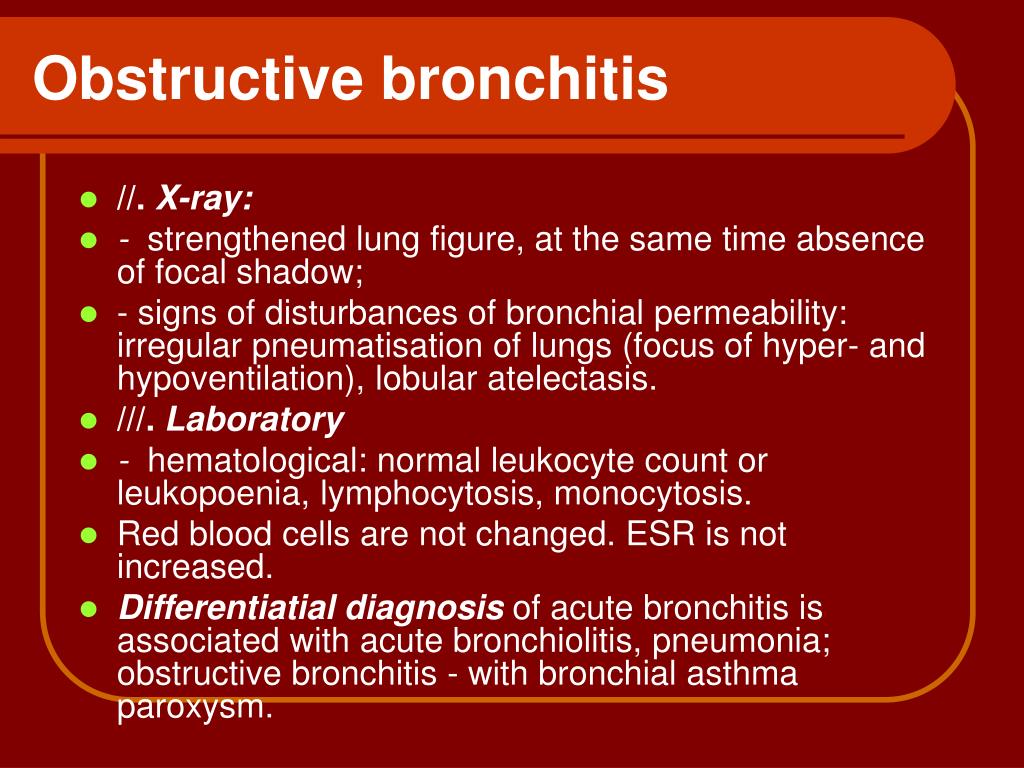 It is important to treat bronchitis quickly to prevent the infection from spreading to the lungs.
It is important to treat bronchitis quickly to prevent the infection from spreading to the lungs.
Pneumonia causes symptoms similar to bronchitis, plus:
- high fever
- rapid heartbeat
- loss of appetite
In some cases, instead of spreading the infection, a person gets concurrent pneumonia with bronchitis.
Both infections have very similar symptoms and this can make an accurate diagnosis difficult for doctors. The lung infection they initially diagnosed as bronchitis could have been pneumonia all along.
Chronic bronchitis
A less common form of bronchitis is chronic bronchitis. The symptoms are the same, but they can last for months. Chronic bronchitis is a recurrent infection that appears for at least 2 years in a row.
Chronic bronchitis is a lung condition that occurs when a person breathes in irritants for a long period of time. These irritants damage the lungs and cause long-term swelling of the airways. The most common causes are smoking, air pollution and chemicals in the workplace.
The most common causes are smoking, air pollution and chemicals in the workplace.
In a person with chronic bronchitis, the lungs function less efficiently than usual. This disruption can make it harder for the body to fight infection and increase the risk of developing pneumonia.
Bronchitis and pneumonia: causes
In most cases, a virus causes bronchitis and bacteria causes pneumonia.
The same virus often causes colds, flu and bronchitis. Viruses are spread when people cough or sneeze, and they can also live on surfaces. They are highly contagious.
The bacterium that most commonly causes pneumonia is Streptococcus pneumoniae. It can be spread through a cough, but is much less contagious than a cold or bronchitis. The immune system of most people immediately kills these bacteria.
A person can get pneumonia if their immune system is not working properly. This dysfunction may be due to recent or concomitant disease. Those who have bronchitis may have a higher risk of developing pneumonia.
Other causes of pneumonia are other, less common bacteria, viruses, or fungi. If a less common bacterium causes pneumonia, doctors call the condition SARS. This term refers to the fact that the symptoms of such pneumonia look a little different than the symptoms of typical pneumonia.
Bacteria are less likely to cause bronchitis. When this happens, there may be a higher risk of bronchitis turning into pneumonia because the bacteria can multiply and spread quickly. The infection can spread from the respiratory tract to the air sacs in the lungs.
Risk factors
If a patient has comorbidities or is not treated for bronchitis, they are at higher risk of developing pneumonia.
People at high risk of developing pneumonia:
- elderly people
- infants and young children
- smokers
- people with weakened immune systems
- people with comorbidities such as asthma
Certain forms of pneumonia are associated with hospital stays. Patients who are in intensive care or who use breathing apparatus have a higher risk of infection.
Patients who are in intensive care or who use breathing apparatus have a higher risk of infection.
Prevention
Prompt treatment of bronchitis can help prevent pneumonia. Once the immune system has returned to normal, the risk of developing a new infection drops.
People can also reduce their risk by stopping smoking to improve their lung health and by wearing a respirator if they use chemicals in the workplace. Regular exercise, which raises your heart rate, can help strengthen your lungs.
Ways to prevent the spread of pneumonia include washing hands, covering coughs or sneezes, and throwing away headscarves and masks immediately after use.
Older people may consider getting the pneumonia vaccine to protect themselves from the disease. The Centers for Disease Control and Prevention (CDC) recommends the vaccine for children under 2 years of age and adults 65 years of age and older.
Diagnosis
Diagnosis can be difficult because bronchitis and pneumonia have very similar symptoms.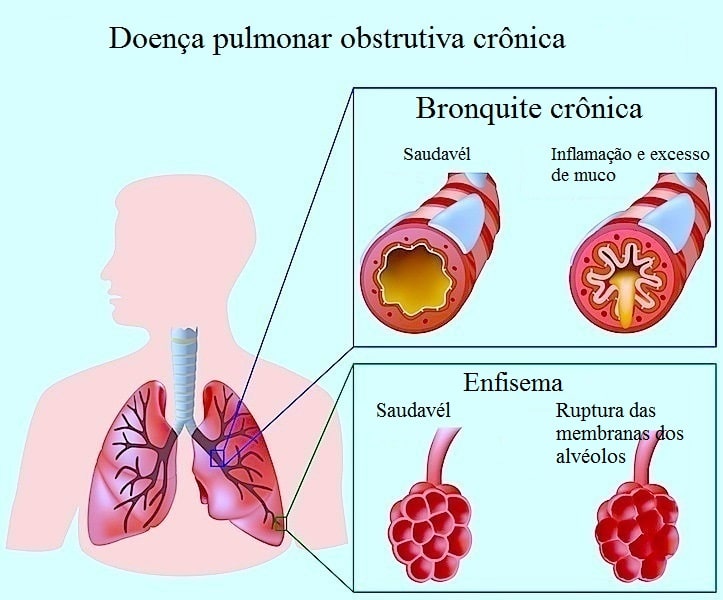 Sometimes it’s impossible to say:
Sometimes it’s impossible to say:
- whether the person has chronic bronchitis
- does the person have bronchitis that has turned into pneumonia
- whether the person had pneumonia from the start
The doctor usually asks about the medical history and does a physical examination. He listens to his lungs for a crackling or bubbly sound.
If bronchitis progresses to pneumonia, symptoms usually get worse. There is a cough with mucus and fever. If a doctor cannot diagnose pneumonia based on symptoms, they may do a chest x-ray or blood test.
Treatment
Most patients can treat cases of acute bronchitis at home. They should rest, drink plenty of fluids, and take pain medication if needed. A humidifier can make breathing easier by loosening the secretion of mucus in the lungs. Honey or lozenges can also relieve symptoms in adults.
Doctors rarely prescribe antibiotics to treat bronchitis. These drugs treat bacterial infections, and bronchitis is almost always a viral infection.
Mild pneumonia can usually be treated at home, but it is advisable to see a doctor. The doctor usually prescribes antibiotics. Patients should always take a full course of antibiotics, even if their symptoms have disappeared.
In more serious cases, you may need to go to the hospital. The medical staff will check to see if the treatment is working, prescribe the right medications, and provide oxygen if necessary. If the patient is too unwell to take pills or drink liquids, they may need an IV.
When to see a doctor
Severe or persistent symptoms may indicate a more serious case. It is important to see a doctor if:
- cough lasts longer than 2 weeks
- has a high temperature for 2 days in a row
- mucus contains blood
- dyspnea worsens
The patient should consult a doctor if he has become ill with bronchitis with concomitant diseases. Timely treatment will help reduce the risk of developing pneumonia.
Conclusions
Pneumonia is the most common complication of bronchitis. It is more common in people with a weakened immune system. Therefore, those who are not feeling well, have recently had an illness, or have serious health problems are at higher risk. This condition is also more likely to affect children and the elderly.
Most people can recover from bronchitis and mild pneumonia at home. The main thing for them is bed rest.
Pneumonia can be severe, so the patient should see a doctor if they have symptoms of this disease.
symptoms of pneumonia and bronchitis
Bronchitis and pneumonia have similar features, so many people confuse them (and in vain!). We will tell you what symptoms should alert you.
Tags:
Health problems
Disease prevention
What do these symptoms mean?
chronic diseases
Dangerous diseases
Images: Rawpixel
Pneumonia is fairly easy to confuse with acute bronchitis due to similar symptoms. One of them is a lingering cough that torments a person for weeks. However, there are key differences between these diseases that we need to be aware of. Understanding what is happening with our body will allow us to consult a doctor in time if the condition begins to worsen.
One of them is a lingering cough that torments a person for weeks. However, there are key differences between these diseases that we need to be aware of. Understanding what is happening with our body will allow us to consult a doctor in time if the condition begins to worsen.
Contents of article
Do not self-medicate! In our articles, we collect the latest scientific data and the opinions of authoritative health experts. But remember: only a doctor can diagnose and prescribe treatment.
What is bronchitis?
Acute bronchitis is inflammation of the airways leading to the lungs. It can develop as a complication of a viral infection, such as a cold or the flu.
Sometimes bronchitis occurs on its own, for non-pathogenic causes. The body often reacts to stimuli in this way, but, of course, a viral infection remains the main cause. This, by the way, means the almost complete uselessness of antibiotics for the treatment of bronchitis.
Symptoms of bronchitis:
- Persistent cough (with or without phlegm).

- Sore throat.
- Chest pain (aggravated by coughing).
- Shortness of breath.
- Short, uneven breathing.
- Chill.
- Body aches.
Acute bronchitis may resolve on its own within a week. But cough, as a residual phenomenon, sometimes drags on for weeks or even months.
If you are diagnosed with bronchitis and your symptoms worsen, stay the same, or change significantly without improvement, you may have developed another infection. They are usually called secondary.
ADVERTISING – CONTINUED BELOW
In this case, it is dangerous to self-medicate, you should definitely consult a doctor (especially if you have not done this before).
How is bronchitis treated?
Acute bronchitis is most often caused by a virus, so antibiotics are rarely prescribed. They are completely ineffective against viruses, and thoughtless use of them only contributes to the cultivation of drug-resistant bacterial cultures.
Sometimes – quite rarely – bronchitis is caused by bacteria, in which case doctors may prescribe antibiotics.
This recommendation is usually made after receiving the results of tests in which a throat swab is sent for bacterial culture. The scheme may seem complicated, but antibiotics without indications are a very bad idea, leading to superbugs.
More often than not, the treatment of acute bronchitis is to relieve the symptoms until the body manages itself.
Have you ever had bronchitis?
What is pneumonia?
For those of us who are older, pneumonia is better known as pneumonia. This condition is much more difficult than bronchitis, and when we get sick, we feel much worse.
Both bronchitis and pneumonia cause a painful cough, but the inflammation is characterized by other important symptoms not characteristic of bronchitis.
Symptoms of pneumonia:
- Fever.
- Chest pain.
- Cough with sputum and mucus.

- Painful and frequent cough.
- Shortness of breath.
- Headache.
- Fatigue.
- Chill.
There are many types of pneumonia, some of which are very serious. In adults, bacterial pneumonia is most common. Among respiratory diseases, it is the most severe, and in the most extreme cases can lead to a poor outcome.
Do not confuse bacterial pneumonia with complications of a coronavirus infection! They develop and proceed in different ways, and the methods of treatment are also different.
How is pneumonia treated?
Unless it is COVID-19, the treatment for pneumonia will depend on its cause. Bacterial inflammation almost always needs antibiotic therapy. Other medications, most often over-the-counter medications, help with symptoms, but their use also requires a doctor’s recommendation.
Under no circumstances should you try to carry pneumonia on your feet!
This is a serious condition that takes time to heal. It is the inability to lie down (and, of course, the lack of adequate medical care for any reason) that makes pneumonia deadly.
It is the inability to lie down (and, of course, the lack of adequate medical care for any reason) that makes pneumonia deadly.
Facts about pneumonia
Thousands of adults are hospitalized every year with pneumococcal pneumonia – the most common type of pneumonia that slowly resolves and torments the sick person for a long time.
There are also less severe forms of pneumonia, among them the so-called “walking” or latent.
It presents with milder symptoms and does not always require antibiotic treatment. A general practitioner – who is a must-see if you suspect pneumonia – will determine the type of pneumonia you have based on your symptoms, physical examination, and tests.
In any case, a patient with pneumonia is supposed to rest, bed rest, drink plenty of water and eat nutritious food. For bronchitis, the recommendations are similar. Acute bronchitis is annoying, but not as severe as pneumonia.
The main thing is not to start the disease, whatever it may be. You should not carry on your feet what needs to be treated at home.
You should not carry on your feet what needs to be treated at home.
What is chronic bronchitis?
Chronic bronchitis is another problem that many of us face. In general, an exacerbation of chronic bronchitis is simply an acute worsening of all its symptoms.
These are usually wheezing, shortness of breath, sputum production or coughing – nothing particularly critical, but the quality of life certainly suffers.
This condition is usually divided into two directions with similar symptoms:
- Common chronic bronchitis. It is characterized by a more frequent cough with increased sputum production.
- Emphysema. With it, shortness of breath occurs more often.
However, symptoms may overlap and appear in both cases.
An exacerbation of chronic bronchitis can be caused by both infection (virus, bacteria or other pathogens) and non-infectious causes.
Vaping, smoking, exposure to the environment, even strong odors can all cause a cough to return in a person who hasn’t coughed in months.

 January 17, 2022.
January 17, 2022.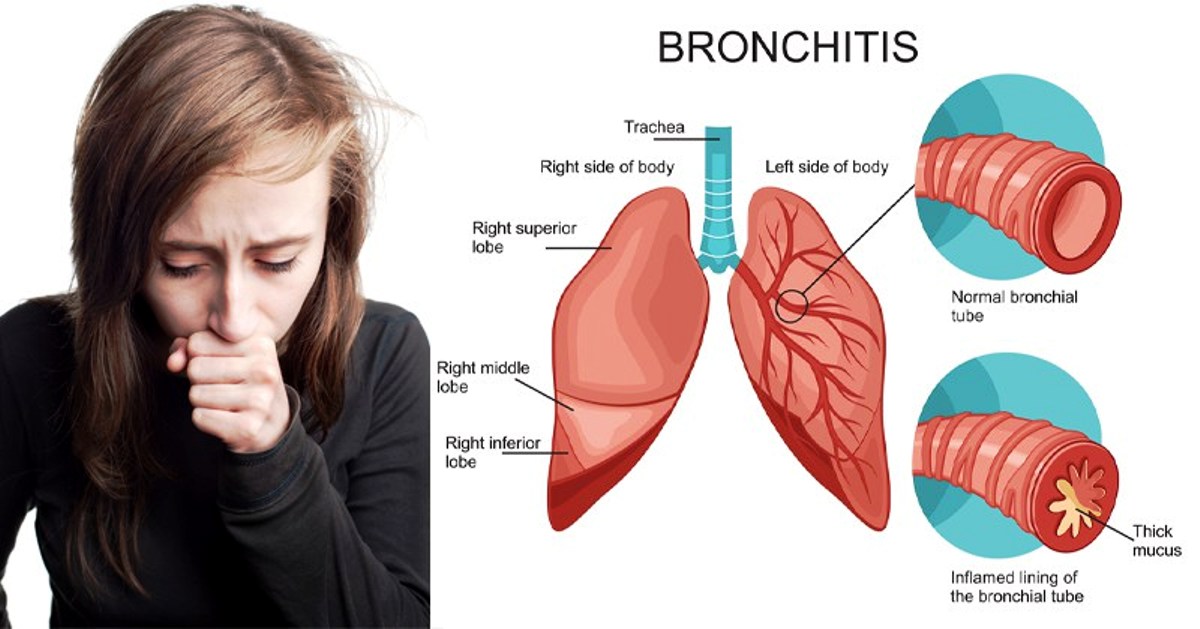 Therapeutics and Clinical Risk Management. August 24, 2015.
Therapeutics and Clinical Risk Management. August 24, 2015.